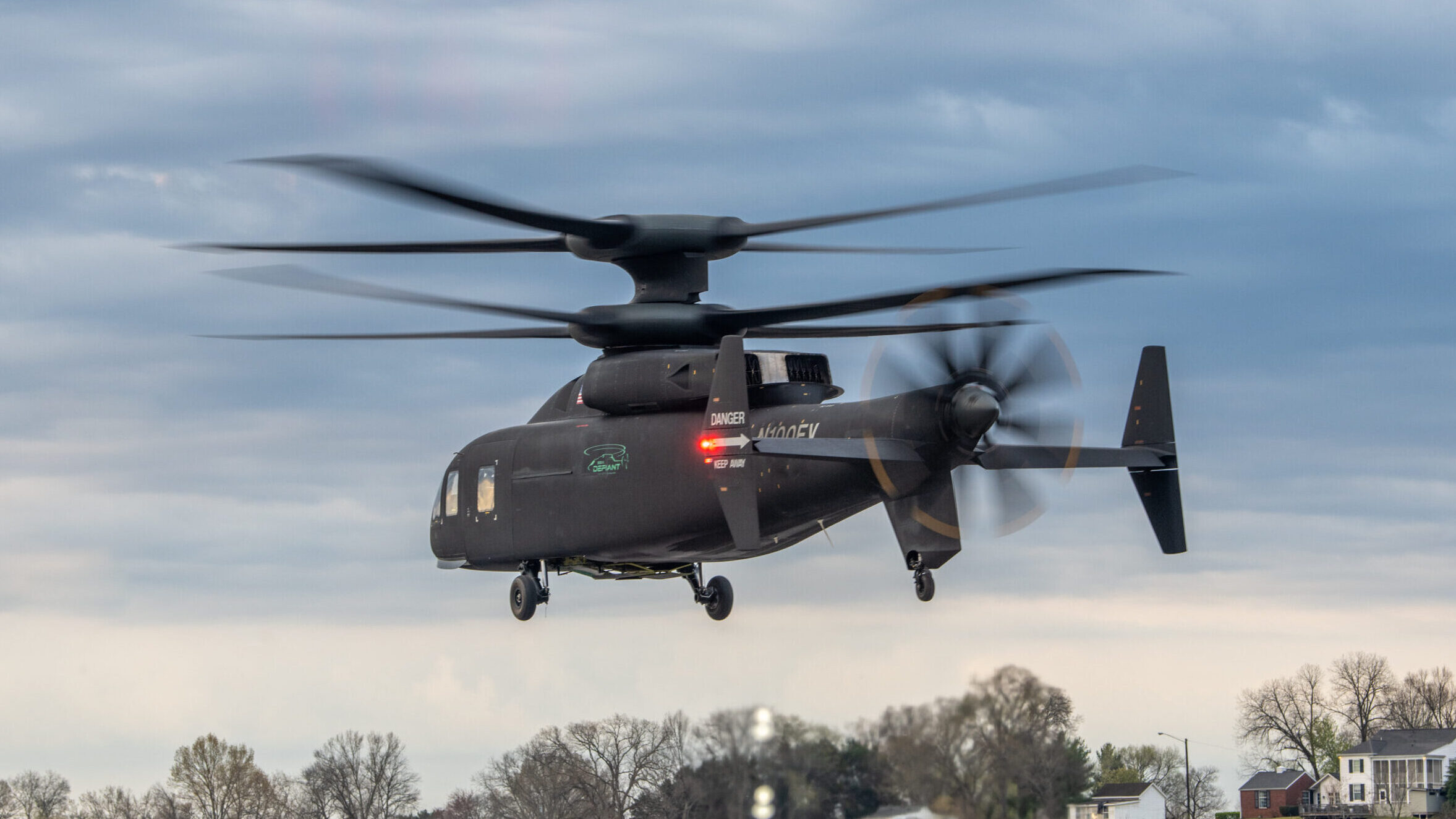
Sikorsky-Boeing’s SB>1 Defiant, its offering for the Army’s Future Long-Range Assault Aircraft, arrived in Nashville. (Courtesy of Sikorsky)
WASHINGTON: The Sikorsky-Boeing SB>1 Defiant experimental aircraft left the Sunshine State for the first time, adding long-range endurance flight to its list of accomplishments ahead of the Army’s future helicopter competition selection this summer.
The Defiant, the Sikorsky-Boeing team’s offering for the Army’s Future Long-Range Assault Aircraft, flew the 700 nautical miles from its home at Sikorsky’s flight test center in West Palm Beach, Fla., to Nashville, Tenn., just in time for the Army Aviation Association of America annual conference taking place there next week.
Defiant completed the flight in seven hours on March 21, including two stops for refueling, according to Sikorsky President Paul Lemmo, who noted that the fuel burn was less than expected.
“[We’re] really proud of that. It shows the reliability of the aircraft,” Lemmo told reporters during a media roundtable today.
Team Defiant, with its coaxial rotor design, is competing for the FLRAA contract against Bell Textron, which has put forward its V-280 tilt-rotor design. The companies have submitted their proposals for source selection, which is scheduled for this summer.
Team Defiant’s flight test with the experimental aircraft didn’t push it to its limits, but rather flew at about 175 to 180 knot on 50% of its full engine power and propulsor torque, Lemmo said. The partnership’s offering has flown up to 247 knots, slightly above the 230 knots required by the Army.
“That shows you what this aircraft can do up into full power range,” he said.
Mark Cherry, vice president and general manager of vertical lift for Boeing, said that the team’s test pilots provided positive feedback to the team.
“The feedback was it was absolutely boring — the way test pilots like it to be,” Cherry said.
Sikorsky-Boeing is confident in their offering for the FLRAA competition, with Lemmo saying that their work has “peaked” in 2022 with the continued demonstration of capabilities. To date, Defiant’s achievements include low-altitude and tree-top maneuverability at speed, landing in a confined area, 60-degree banked turns and lifting a 5,300-pound Guided Multiple Launcher Rocket storage pod, according to Sikorsky press releases.
Bell Textron officials, meanwhile, have said they expect to be cheaper and a more cost-effective buy for the Army’s FLRAA program. Today Cherry countered that Team Defiant was “extremely confident” in its cost effectiveness, with Lemmo adding that the team has the facilities to carry out the program.
“We have all the infrastructure necessary to work this program,” Lemmo said. “So I think right then and there, that’s a potential savings … to the Army, over our competition. You know, we think this aircraft will be affordable to build, and particularly affordable from a lifecycle perspective.”
On the call with reporters, the company also announced six new suppliers for the FLRAA program. A subsequent press release provided additional details about each vendor’s role:
- ATI: gearbox forgings
- Collins Aerospace: flight control, vehicle management computer, aircraft seats
- Elbit Systems of America: mission system computer
- Parker Aerospace: flight controls, hydraulic pumps and modules
- Magnaghi Aeronautica: landing gear
- Marotta Controls: electrical power system components
“What that really means is that we have the infrastructure to be ready for this program,” said Lemmo.
Lemmo said that the team is planning to do more test flights ahead of down select. He said the experimental aircraft would continue to “expand” its flight envelope as it prepares for a contract award later this year.
“We’ll continue to fly even past day one of the award as long as we we feel that we can get some risk reduction through flight testing, we will do it,” he said.
While the winner for the FLRAA program is expected to be chosen this summer, the Army doesn’t expect to actually field the new aircraft until 2030.






















